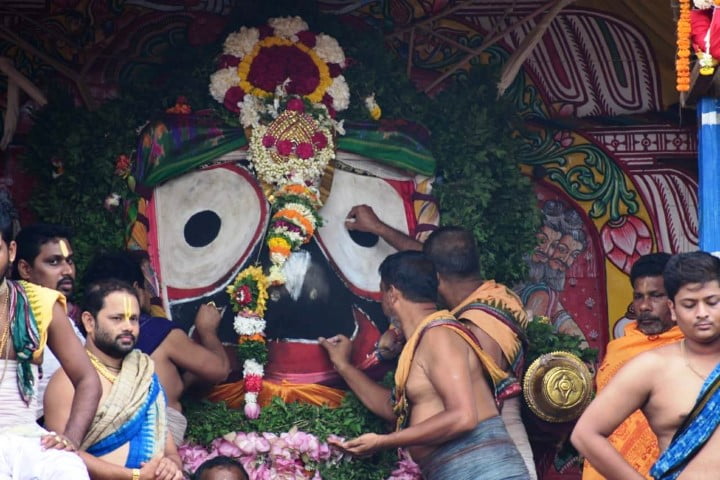Origin Of The Origin: King’s Impatience Behind Unfinished Idols Of Lords

It was magical. At that time, a frail old man appeared and requested the King to be taken into the Karusala (workshop), emphasising that he was going to carve the deities. The old man (who was Vishwakarma, the architect and craftsman of the heavenly planets), said he would carve the deities.
His condition was that he should not be disturbed in his work. As he would be working in a secluded room behind closed doors, no one was to be allowed to enter the room for the next fifteen days. Outside the Karusala, there should be musicians playing all the time so that the sound of the carving work does not travel out.
Day after day, Vishwakarma worked diligently with immaculate planning and work, layer after layer. The King could not resist the temptation to see the work of Vishwakarma and the Lord’s forms. He opened a window and was trying to peep into the work of stealthily, when Vishwakarma looked back, saw the King and in a split moment, turned into a mass of light and assimilated into the idols of the Lords. These have remained unfinished ever since.
Patience is one of the greatest virtues to be pursued by humanity and the King’s impatience stopped the idol work and prevented the divine dexterity of Vishwakarma from reaching completion.
Story of the temple:
Narada advised the King to construct a temple on Nilachala Hill, which was to be a thousand hasta (hands, which are 500 feet) long. After the completion of the temple, Indradyumna decided to invite Brahma for the consecration ceremony of the deities.
The King left for Brahmaloka to call on Brahma and extend the invitation. However, he was stopped at the gate by a guard named Manikodara because Indradyumna appeared human with a material body. But with the intervention of Narada, both were allowed. Brahma gladly accepted the invitation, instructing the King to commence the arrangements and committing his active participation.
As Indradyumna had to wait one day in Brahmaloka before being allowed to see Brahma, a complete Manvantara (a cycle of 71 maha yugas, equivalent to 4,320,000 earthly years) had passed on Prithviloka (planet Earth). In this Manvantara, the temple structure had caved in and was sunk below the sand. In the absence of Indradyumna, the then king of Utkala, Gala Madhava, had the temple resurrected and pulled out and claimed deceitfully to have built the temple himself.
On Indradyumna’s return, there was widespread confusion. But Kaka Bhusundi, the ageless, Rama devotee crow living on the sacred banyan tree near the temple, in its inimitable style, told everyone the true story about Gala Madhav.
Indradyumna accepted Gala Madhava as an associate despite his folly and declared that that Gala Madhava would be welcome to worship Jagannatha together with him, and that the deity installed by Gala Madhava would also be worshipped on the main altar as one of the seven main deities of the temple. This deity is called Nila Madhava and is worshipped on the Ratna Singhasana till date.
ya esa plavate daruh sindhu pare hyapaurushah, tamupasyaduraradhyam muktimyati sudurlabham
“One who venerates that transcendental piece of wood that floated to the ocean shore, which is so hard to worship properly, will attain the rarest form of salvation.”
Utkala Khanda of Skanda Purana (21.3)
(Major references: Utkala Khanda of Kapil Samhita and Madala Panji, compilation of Shishu Krishna Das in the 18th century in Oriya language under the title Deula tola)
(Disclaimer: The views expressed by the author are his own own and do not necessarily represent that of the website)

Comments are closed.